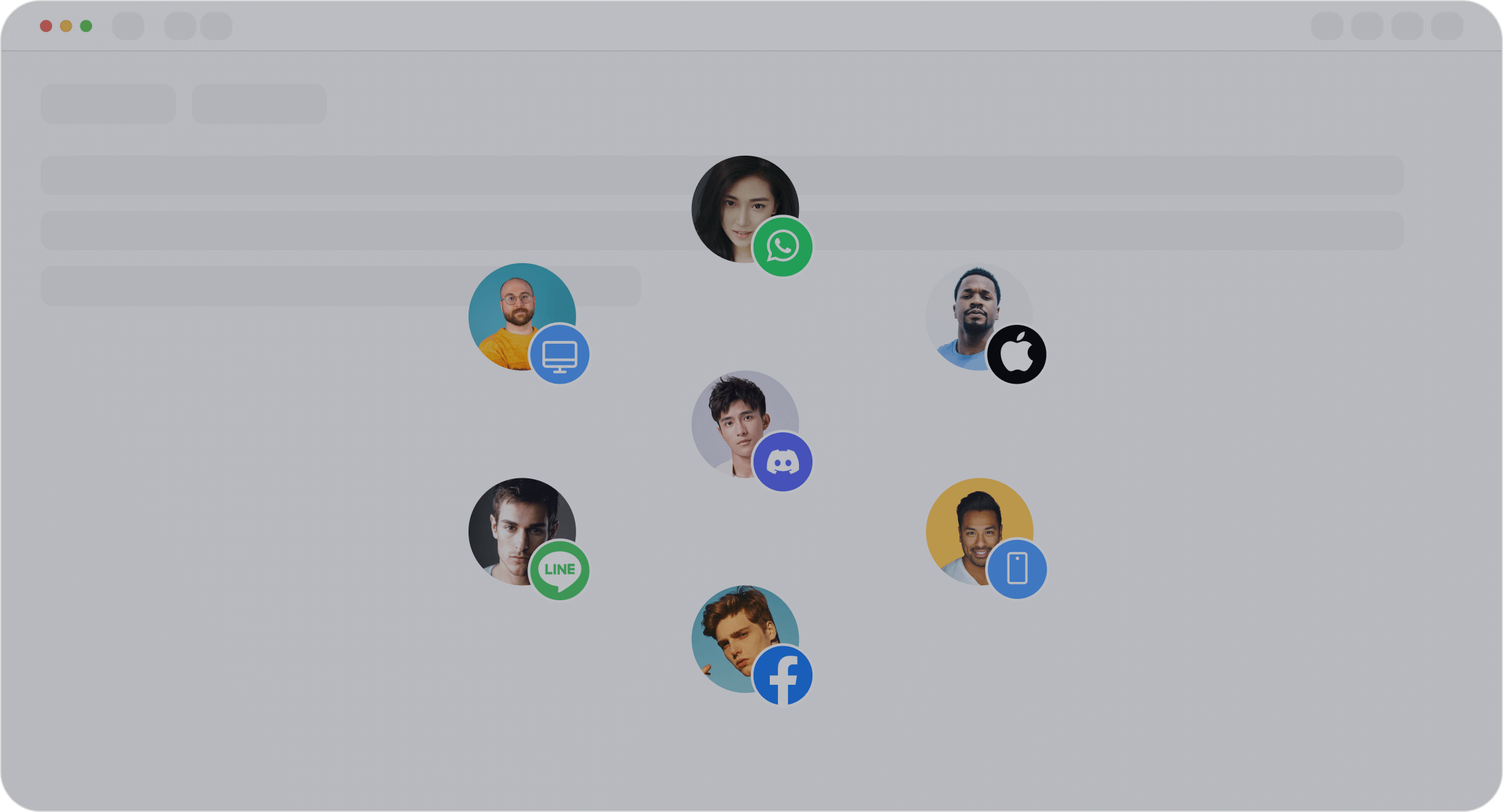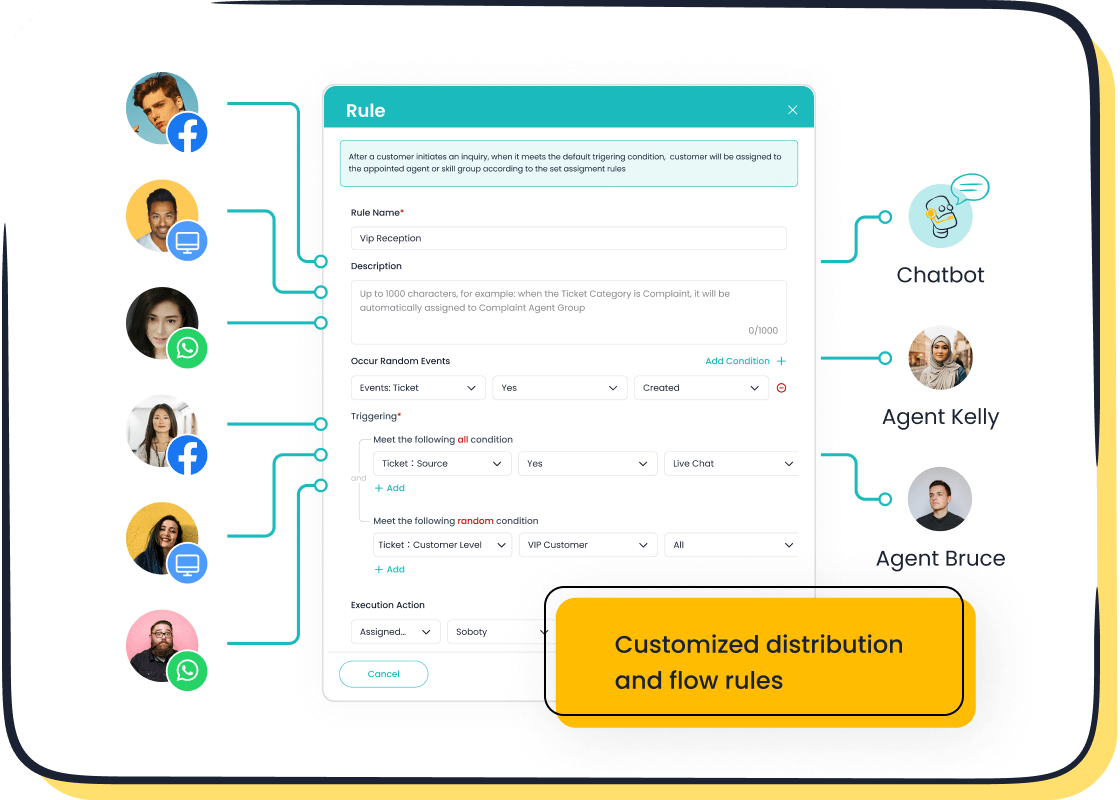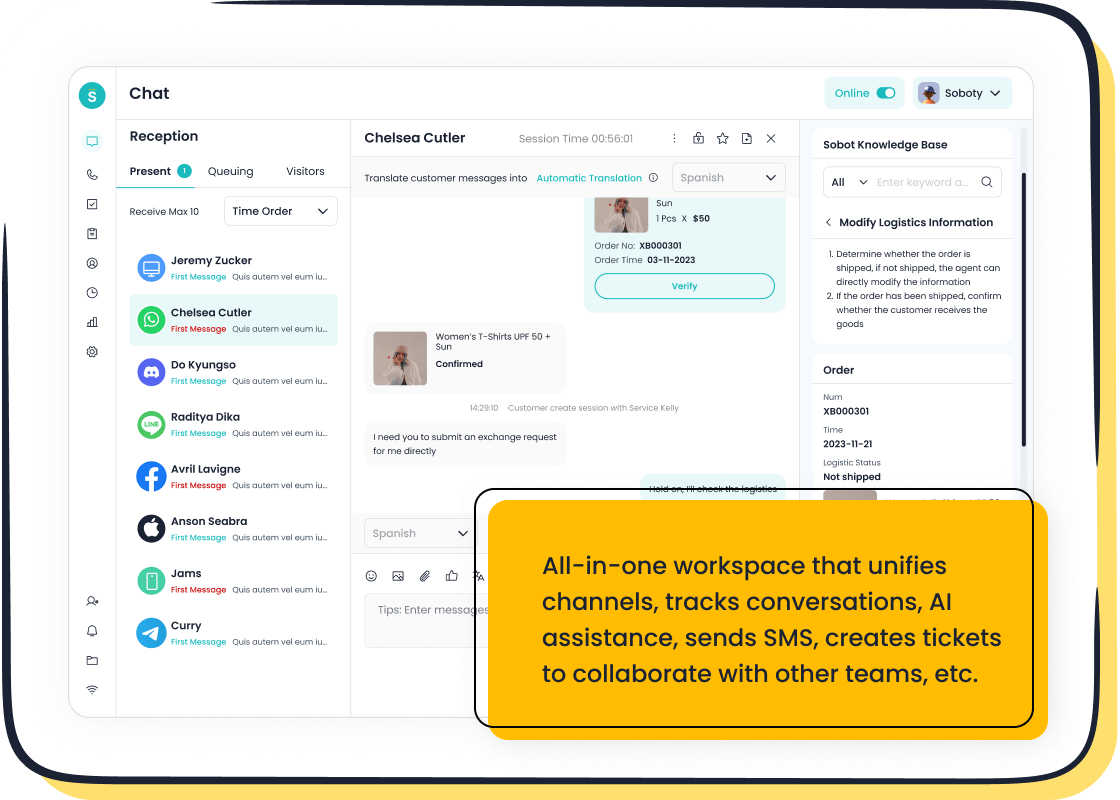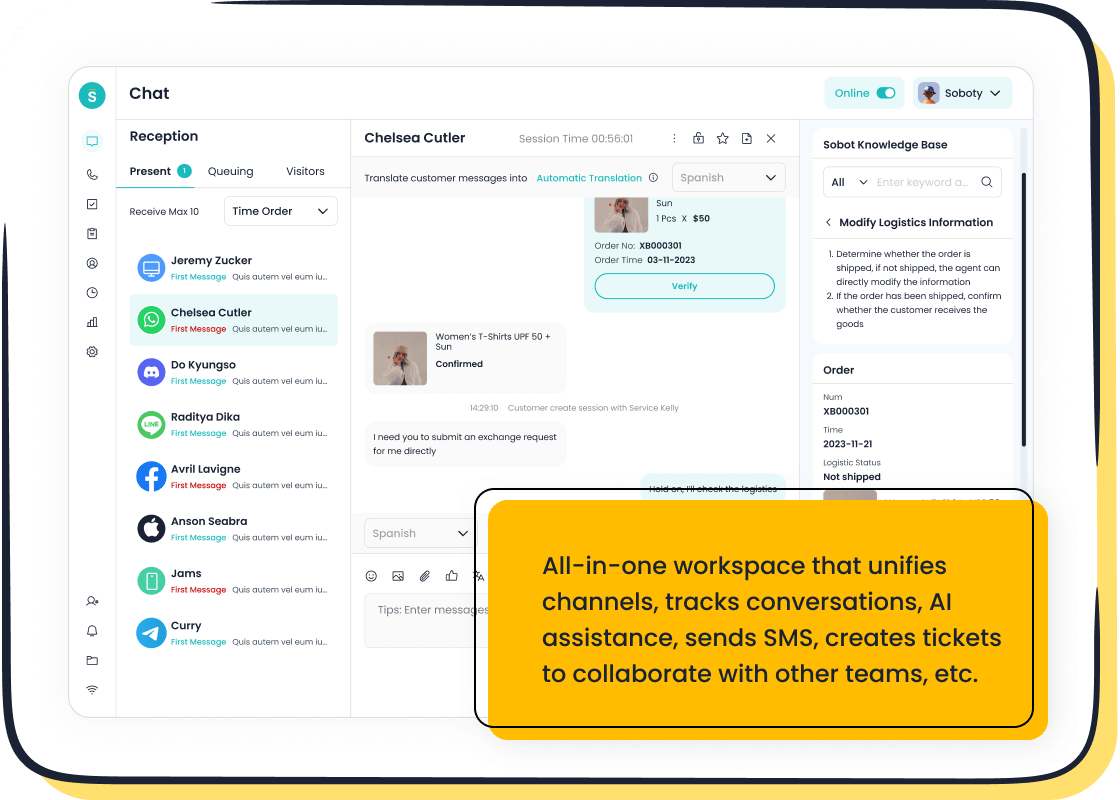Top Customer Experience Management Strategy Frameworks for 2025

The top customer experience management strategy frameworks for 2025—such as Forrester CX Index, Gartner Five Pillars, McKinsey Customer Journey, Net Promoter System, and the Account Experience Framework—help companies drive revenue and loyalty. Businesses adopting customer experience management see up to 5.7 times more revenue and 89% higher retention in omnichannel environments.
- 80% of customers prefer brands with personalized customer experience.
- By 2025, 89% of businesses will compete mainly on customer experience management.
Sobot leads with intelligent contact center solutions and Sobot AI, helping organizations unify customer support, marketing, and service for measurable impact.
Customer Experience Management Frameworks
What Is a CXM Framework?
A customer experience management framework is a structured approach that helps organizations design, deliver, and measure every interaction a customer has with a brand. These frameworks guide companies in unifying customer contact, service, and support across all channels. Academic and industry literature shows that a strong customer experience management framework balances operational metrics, such as resolution times, with emotional indicators like satisfaction and loyalty. It combines quantitative data, such as Net Promoter Score and Customer Satisfaction Score, with qualitative feedback to create actionable insights. The framework covers the entire customer journey, not just single touchpoints, and promotes a customer-centric culture. Companies like Sobot use these frameworks to ensure every customer receives consistent and high-quality service, whether through live chat, phone, or social media.
Tip: A robust cx framework requires executive commitment, cross-functional collaboration, and continuous measurement to drive improvement.
Why Frameworks Matter in 2025
In 2025, customer experience management frameworks play a critical role as businesses face more complex customer journeys and higher expectations. Recent reports highlight that frameworks like the Account Experience (AX) Framework link customer experience management directly to revenue retention and growth. These frameworks help companies measure feedback, act on insights, and grow customer loyalty. They also ensure that customer experience measurement connects to business outcomes, such as increased retention rates and higher customer lifetime value. Sobot’s mission to provide intelligent, omnichannel contact center solutions aligns with the need for robust frameworks that unify data, streamline support, and drive measurable results.
Key Trends in Customer Experience
Several trends shape the future of customer experience management. Customers now use multiple channels daily, expecting seamless and personalized interactions everywhere. Omnichannel cx frameworks have become essential for managing these complex journeys. Technologies like AI and automation enable real-time data analysis, allowing companies to personalize communications and journeys for each customer. New engagement formats, such as VR and AR, require customer experience frameworks to adapt quickly. Customers also expect integrated feedback channels, combining digital and personal touchpoints. Sobot’s omnichannel solutions and live chat tools help businesses meet these demands by providing unified workspaces, AI-powered support, and advanced analytics for continuous improvement.
Leading Customer Experience Management Strategies
Customer experience management strategy frameworks help organizations deliver consistent, high-quality service across every channel. Each framework offers a unique approach to improving customer satisfaction, loyalty, and business growth. Companies can use these frameworks to unify their contact centers, ecommerce platforms, and omnichannel environments. Sobot’s Live Chat and Omnichannel Solution provide practical tools for implementing these strategies, enabling seamless customer engagement and real-time feedback collection.
Forrester CX Index
The Forrester CX Index measures how well a brand delivers customer experience that creates and sustains loyalty. This customer experience management framework evaluates three core dimensions: effectiveness, ease, and emotion. Brands use the CX Index to benchmark performance, identify gaps, and prioritize improvements. In omnichannel environments, the CX Index helps companies track satisfaction across digital and physical touchpoints. Sobot’s analytics features support this framework by providing real-time data on customer interactions, making it easier to act on feedback and improve relationships.
Gartner Five Pillars
Gartner’s Five Pillars framework guides organizations in building a strong customer experience management strategy. The five pillars include: understanding the customer, designing experiences, delivering consistently, measuring outcomes, and driving continuous improvement. This cx framework emphasizes the importance of integrating customer feedback into every stage of the journey. In contact centers, the Five Pillars help teams align processes and technology to deliver seamless support. Sobot’s Omnichannel Solution enables businesses to unify customer data, automate workflows, and monitor satisfaction, supporting each pillar of the framework.
McKinsey Customer Journey
The McKinsey Customer Journey framework focuses on managing the entire journey, not just individual touchpoints. Companies map the customer journey, identify pain points, and use insights to drive strategic decisions. Research shows that organizations using this customer experience management framework see a 20% increase in customer satisfaction and up to 20% higher revenue growth. Real-world examples include:
- Amazon uses journey mapping and AI-driven personalization to achieve over 90% customer satisfaction and a high NPS.
- Zappos empowers employees to deliver personalized service, resulting in top customer satisfaction scores.
- Vodafone applied journey analytics to reduce churn by 40% and increase NPS.
Sobot’s Live Chat platform supports this approach by enabling real-time engagement and tracking every step of the customer journey across channels.
Net Promoter System (NPS)
The Net Promoter System (NPS) is a widely used customer experience management strategy that measures loyalty and predicts growth. NPS asks customers how likely they are to recommend a brand, then categorizes responses as Promoters, Passives, or Detractors. Companies calculate NPS by subtracting the percentage of Detractors from Promoters. NPS serves as a key performance indicator for customer satisfaction, retention, and advocacy. Statistical indicators linked to NPS include Customer Acquisition Cost (CAC), Customer Lifetime Value (CLV), retention rate, and churn rate. Research shows that every 7-point increase in NPS can drive 1% revenue growth, and companies with high NPS achieve up to 23% higher renewal rates. The table below summarizes recent findings:
| Evidence Type | Details |
|---|---|
| NPS Definition | Promoters (9-10): Loyal; Passives (7-8): Satisfied; Detractors (0-6): Unhappy |
| Research Findings | 7-point NPS increase = 1% revenue growth; High NPS links to long-term business growth |
| Company Example | Apple: NPS above 70, world-class loyalty, strong revenue growth |
| Implementation Insights | Regular NPS tracking correlates with higher growth |
Sobot’s built-in satisfaction surveys and analytics make it easy to collect NPS feedback, segment responses, and monitor trends over time.
5 Category Framework
The 5 Category Framework organizes customer experience management into five key areas: awareness, consideration, purchase, service, and loyalty. This customer experience management strategy helps companies map the entire journey, ensuring no stage is overlooked. By analyzing feedback and engagement at each category, businesses can identify opportunities to improve satisfaction and strengthen relationships. In ecommerce and contact centers, this framework guides teams to deliver targeted support and personalized experiences. Sobot’s unified workspace and AI-powered tools help businesses manage each category efficiently, from initial engagement to post-purchase support.
Note: Choosing the right customer experience management framework depends on business goals, industry, and customer needs. Sobot’s solutions offer the flexibility and analytics needed to implement any of these strategies effectively.
Customer Journey Mapping in Practice

Mapping Steps
Customer journey mapping gives organizations a clear view of how customers interact with their brand. The process starts by defining objectives and key performance indicators. Teams collect data from analytics tools, sales records, support logs, and surveys. They then create detailed personas that reflect customer demographics and preferences. Each persona aligns with specific journey stages, such as awareness, consideration, decision, and retention. Teams use digital whiteboards or spreadsheets to visualize the journey. They break the journey into phases and track how customers move across channels. Emotional elements, such as questions and satisfaction, are captured at each stage. After mapping, teams analyze the journey to find gaps or pain points. This structured approach helps companies improve customer experience and drive optimization.
A variety of industries have used customer journey mapping to transform their operations. The table below shows how different sectors structure their journey maps and what they learn:
| Industry | How the Journey Map is Structured | Key Learnings |
|---|---|---|
| Tourism & Travel | Compares personas' planning and travel phases; includes emotional journey | Quality of steps influences experience; personas differ in needs; emotional mapping adds value |
| Healthcare | Details patient interactions and experiences | Mapping transforms healthcare into seamless, empathetic experiences |
| Marketing | Illustrates buying phases; includes website experience and KPIs | KPIs show trends; combining data with pain points helps action planning |
| Telecommunications | High-level to detailed steps with satisfaction scores and pain points | Many steps are energy-consuming due to language and device setup issues |
| Consulting | Shows agency-client coordination and backstage collaboration | Mapping improves communication and solution pitching |
| Government | Outlines citizen interactions with government processes | Structured mapping clarifies citizen experience and touchpoints |
Touchpoints and Channels
Identifying key touchpoints and integrating multiple channels are essential for effective customer journey mapping. Teams start by collecting customer data from sources like analytics, sales records, and social media. They develop personas that include channel preferences and journey behaviors. Each persona is matched with touchpoints at different journey stages. Mapping tools help visualize how customers move across channels, such as websites, apps, and social media. Teams capture emotional triggers and satisfaction at each step. Regular analysis of journey maps reveals gaps, such as inconsistent messaging or slow responses. Addressing these issues leads to better customer experience and higher satisfaction.
Tip: Maintain journey maps as living documents. Update them regularly with new data and insights to keep pace with changing customer needs.
Sobot Live Chat Example

Sobot Live Chat provides a real-world example of customer journey mapping in action. A retail company used Sobot’s AI-powered analytics to identify high-value customer segments and optimize their journey. The platform delivered real-time insights and seamless CRM integration. As a result, the company achieved a 25% increase in customer lifetime value. Sobot Live Chat supports omnichannel engagement, allowing businesses to track customer interactions across websites, apps, and social media. This approach enables teams to anticipate customer behavior and respond quickly, improving journey orchestration and driving measurable business growth. Sobot’s solution demonstrates how effective customer journey mapping can lead to significant improvements in customer experience and operational efficiency.
Framework Comparison

Structure and Elements
Customer experience management frameworks differ in how they organize teams, processes, and values. Many frameworks use a structure that focuses on customer-responsive hierarchies instead of traditional vertical models. Companies often look at several elements when comparing frameworks:
- Structure: Shows if the organization responds quickly to customer needs or follows a strict chain of command.
- Systems: Describes how teams share customer data and use it to improve value and experience.
- Staff: Lists the roles and responsibilities of people who deliver customer value and work together across departments.
- Style: Highlights leadership behaviors that support customer-centric goals.
- Skills: Points to unique abilities that help the company deliver great experiences.
- Shared Values: Explains the beliefs and principles that shape the company’s culture and reputation.
These elements help companies select a framework that matches their goals for customer experience measurement and analysis. Sobot’s solutions, for example, unify customer data and support collaboration, making it easier to align with these elements.
Implementation Complexity
Implementing a customer experience management framework can range from simple to highly complex. Companies face different challenges based on their size and needs:
- Basic frameworks cost less but offer fewer features.
- Mid-range and enterprise-grade solutions require more investment and technical skills.
- Ongoing costs include cloud hosting, AI training, API licensing, and security compliance.
- Technical challenges involve integrating data, managing real-time analytics, and ensuring scalability.
- Teams must balance automation with human support and provide training for new systems.
Sobot helps businesses manage this complexity by offering scalable, cloud-based platforms with built-in analytics and easy integration. This approach reduces the time and cost needed for customer experience measurement and analysis.
Business Impact
The right framework delivers measurable results. Companies that use strong customer experience measurement and analysis see higher satisfaction scores and better business outcomes. For example, Agilent, a global leader in life sciences, partnered with Sobot to improve its customer service. By using Sobot’s omnichannel solution and AI-powered chatbot, Agilent increased service efficiency by six times and reduced costs by 25%. Their customer satisfaction score reached 95%. These results show how effective customer experience metrics and measurement can drive real business impact.
Note: Companies that invest in customer experience measurement and analysis often see improved loyalty, higher revenue, and stronger brand reputation.
| Framework | Structure Focus | Implementation Complexity | Business Impact Example |
|---|---|---|---|
| Forrester CX Index | Customer-centric | Moderate | Improved loyalty, higher NPS |
| Gartner Five Pillars | Integrated process | Moderate-High | Consistent service, better CSAT |
| McKinsey Customer Journey | Journey-based | High | Increased revenue, reduced churn |
| Net Promoter System | Loyalty-driven | Low-Moderate | Higher renewal, strong advocacy |
| 5 Category Framework | Stage-focused | Moderate | Targeted support, better metrics |
Best Practices for Customer Experience Management
Selecting the Right Framework
Choosing the right customer experience management framework shapes long-term success. Industry leaders recommend a structured approach:
- Gather feedback from every customer touchpoint and channel.
- Use advanced analytics and AI to analyze experience data for actionable insights.
- Share reports and customer stories across teams to build a customer-centric culture.
- Take informed actions to recover at-risk customers and drive experience improvement.
- Match frameworks to business size and complexity by leveraging scalable technology.
- Encourage collaboration between departments to align strategies and boost customer retention.
Companies should set clear goals and KPIs, focusing on customer satisfaction and retention. Involving cross-functional teams, such as sales, support, and IT, ensures a comprehensive strategy. Regular customer satisfaction surveys help track progress and identify areas for improvement.
Technology Integration
Technology plays a vital role in customer experience management. Businesses that integrate AI and automation see measurable gains in satisfaction and retention. For example, Amazon’s AI-powered chatbots handle thousands of interactions, reducing wait times and increasing customer engagement. Sobot’s AI contact center solutions have helped brands like Samsung achieve a 97% customer satisfaction score and Agilent increase service efficiency sixfold. These results show that technology not only streamlines operations but also enhances customer satisfaction and retention. Sobot’s omnichannel platform unifies data, automates workflows, and provides real-time analytics, making it easier to deliver consistent, high-quality service.
| Company | Outcome Metric | Impact Summary |
|---|---|---|
| Samsung | 97% Customer Satisfaction Score (CSAT) | Sobot’s AI solution improved satisfaction and operational efficiency. |
| Agilent | 6x Service Efficiency | Sobot’s AI-powered center enhanced inquiry handling and workflows. |
| Opay | 90% Customer Satisfaction | Sobot’s omnichannel AI center streamlined interactions and improved response times. |
Continuous Improvement
Continuous improvement remains essential in customer experience management. Leading organizations define clear service level agreements (SLAs) and use predictive analytics to anticipate issues. They update customer journey maps regularly, reflecting new feedback and behavior changes. Agile methods, cross-team collaboration, and transparent communication help teams adapt quickly. Sobot’s solutions support this process by providing real-time feedback tools and analytics, empowering teams to monitor satisfaction and retention. Regular employee training and recognition foster a culture focused on customer satisfaction and experience improvement. Companies that prioritize these practices see higher retention, better engagement, and long-term growth.
Tip: Regularly review key metrics like NPS, CSAT, and churn rate to guide customer retention strategies and ensure ongoing satisfaction.
Selecting the right customer experience management framework shapes business success in 2025. Customer experience management frameworks, such as those supported by Sobot, help organizations measure, manage, and improve every interaction. Metrics like Net Promoter Score and customer satisfaction guide teams to optimize customer experience management. Sobot’s AI-powered solutions automate over 50% of interactions, saving costs and boosting satisfaction. Experts recommend continuous monitoring, journey mapping, and technology integration for effective customer experience management. Companies should assess their current customer experience management approach, pilot new frameworks, and use advanced analytics to drive satisfaction and loyalty.
FAQ
What is a customer experience management framework?
A customer experience management framework provides a structured way for companies to design, deliver, and measure every customer interaction. It helps unify service, support, and sales across channels. Sobot uses these frameworks to improve satisfaction and drive measurable business results.
Why does customer experience measurement matter in 2025?
Customer experience measurement helps companies track satisfaction, loyalty, and retention. In 2025, 89% of businesses will compete mainly on customer experience management. Accurate measurement and analysis guide improvements and support growth. Sobot’s analytics tools make this process simple and effective.
How does Sobot support customer experience management strategy?
Sobot offers omnichannel solutions, live chat, and AI-powered analytics. These tools help businesses implement customer experience management strategies, automate workflows, and collect real-time feedback. Companies using Sobot have seen up to a sixfold increase in service efficiency.
What are the key benefits of customer journey mapping?
Customer journey mapping reveals pain points, improves satisfaction, and increases loyalty. For example, Sobot Live Chat enables businesses to track interactions across channels, leading to a 25% increase in customer lifetime value. Journey mapping supports better customer experience management and strategy.
How can companies start with customer experience measurement and analysis?
Companies should gather feedback from all touchpoints, use analytics to find trends, and act on insights. Sobot’s unified workspace and built-in analytics make customer experience measurement and analysis easy. Regular reviews help teams improve customer experience management frameworks and strategies.
Tip: Consistent measurement and analysis drive long-term customer loyalty and business growth.
See Also
Discover The Leading Cloud Contact Centers For 2025
Comprehensive Review Of Best Contact Center Solutions 2024
Best Ten Voice Of Customer Software Tools In 2024
